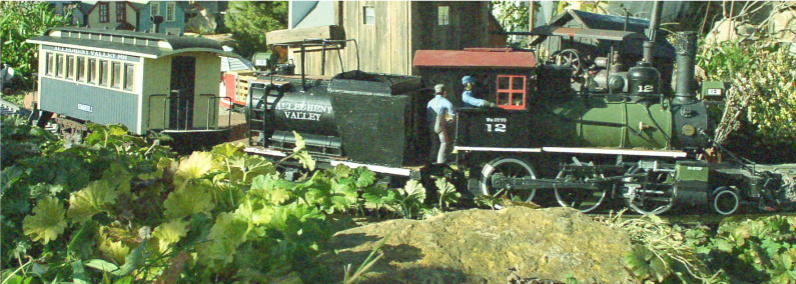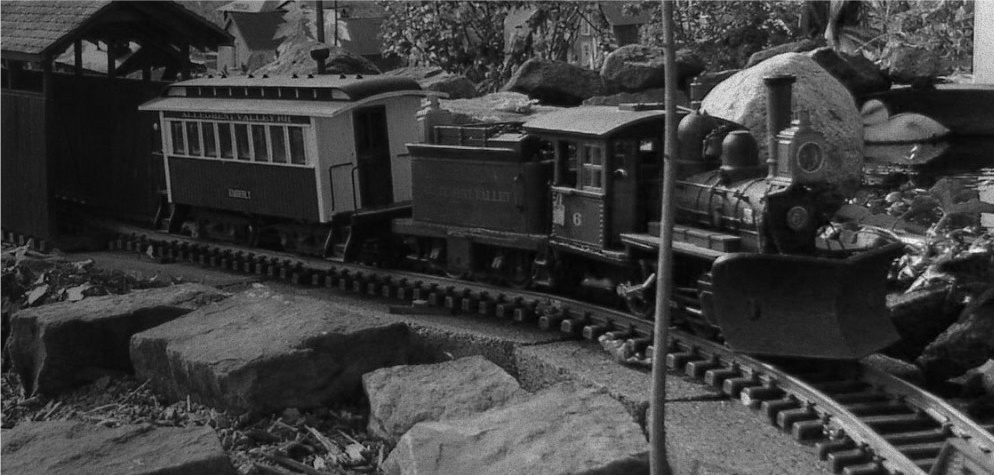
This is for the guys who are just getting started. If saves somebody a
lot of wasted shots and aggrevation, then it is worth it.
First and foremost; You don't NEED a big fancy camera, just one with a decent lens. These were all done with an old obsolete Olympus C-4000 4.0 megapixel that I got used for $40. It gets used for just about everything, even though I have 2 very nice film SLRs. Digital cameras will save a lot of money over film, especially while you are practicing and learning. I often take 2-3 pics for every one I get that's worth sharing, and maybe 10-15 for every one that comes out really good. That's about average from what I've been told. Learn these basics of good photography first, and you won't need to rely on a bunch of post production tricks like Photoshop.
Keep it Steady - The biggest problem many folks have taking pictures of anything small is keeping the camera steady, your body moves more than you notice. Pressing the shutter also often shifts the camera slightly. A mini tripod is good if you have one, but a small sandbag is more versatile. An easy cheap one can be made by filling an old heavy sock with uncooked rice, dried beans, pebbles, or yes, dry sand. The second part of this is, for still pictures, use the camera's delay timer... it gives the camera time to steady after the shutter button is pressed.
Framing - Unless they're shot from an overpass, we rarely see the upper parts of the train. Try shooting from as low as possible. And frame as tight as possible if there is junk you don't want people to see. This is obviously just a bunch of toys/models. I repeat, get l-o-w
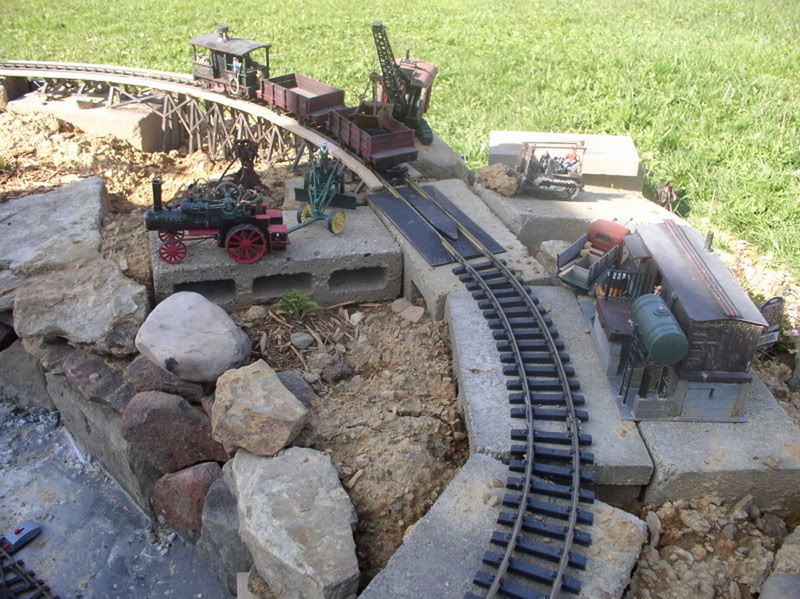
First and foremost; You don't NEED a big fancy camera, just one with a decent lens. These were all done with an old obsolete Olympus C-4000 4.0 megapixel that I got used for $40. It gets used for just about everything, even though I have 2 very nice film SLRs. Digital cameras will save a lot of money over film, especially while you are practicing and learning. I often take 2-3 pics for every one I get that's worth sharing, and maybe 10-15 for every one that comes out really good. That's about average from what I've been told. Learn these basics of good photography first, and you won't need to rely on a bunch of post production tricks like Photoshop.
Keep it Steady - The biggest problem many folks have taking pictures of anything small is keeping the camera steady, your body moves more than you notice. Pressing the shutter also often shifts the camera slightly. A mini tripod is good if you have one, but a small sandbag is more versatile. An easy cheap one can be made by filling an old heavy sock with uncooked rice, dried beans, pebbles, or yes, dry sand. The second part of this is, for still pictures, use the camera's delay timer... it gives the camera time to steady after the shutter button is pressed.
Framing - Unless they're shot from an overpass, we rarely see the upper parts of the train. Try shooting from as low as possible. And frame as tight as possible if there is junk you don't want people to see. This is obviously just a bunch of toys/models. I repeat, get l-o-w

Pay Attention to Clutter
- A really interesting, well framed shot like this can be totally
ruined by background clutter. Try to see exactly what your camera sees,
not just what you want it to. Then you won't have to resort to
Photoshop tricks.
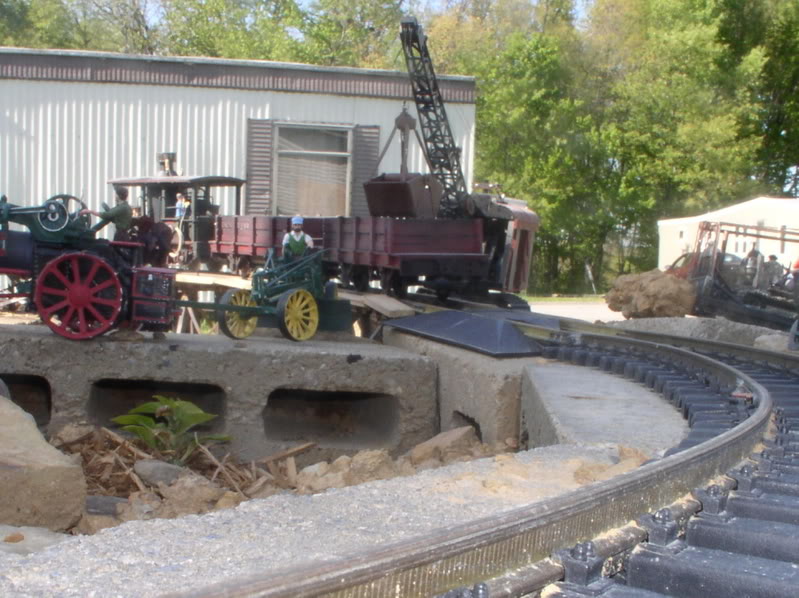
Lighting Tips
- Trying to get rid of the clutter resulted in lousy framing and angle
again. The light was getting pretty bad as well. I'll simply have to
try something else some other time. Rail photographer John West once
gave me this tip on lighting, "Mornings are for pictures, afternoons
for naps, and evenings for drinks"... I've also had good luck on
overcast days and at dusk too. Harsh shadows and bad lighting angles
can ruin an otherwise great picture. Slightly subdued, indirect light
is nearly always best. Flash is nearly always worst.
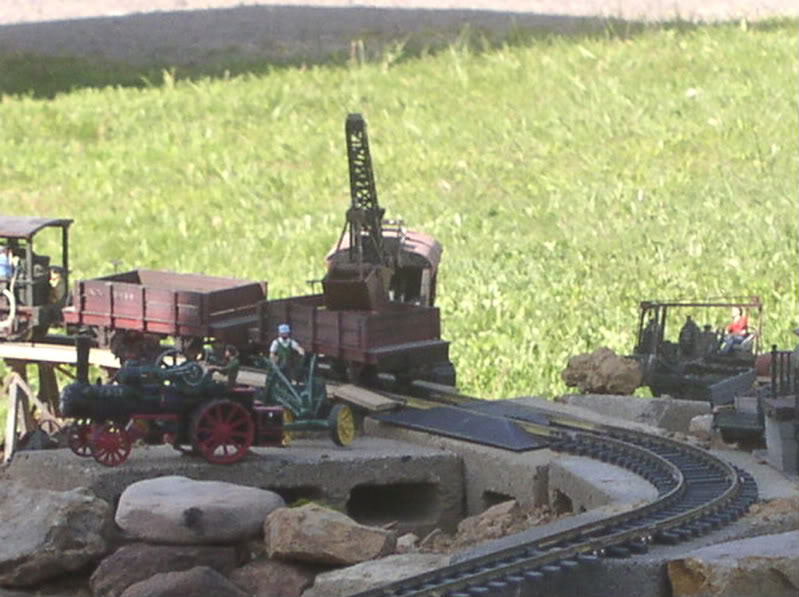
Lighting 2 -Except when flash is used for a specific effect.... like this O. Winston Link style photo
Basic Camera Tricks-
Shooting in Black and White can add drama to a scene - and eliminates any garish toy train hues. Many cameras and photo editors have this option.
Shooting in Black and White can add drama to a scene - and eliminates any garish toy train hues. Many cameras and photo editors have this option.
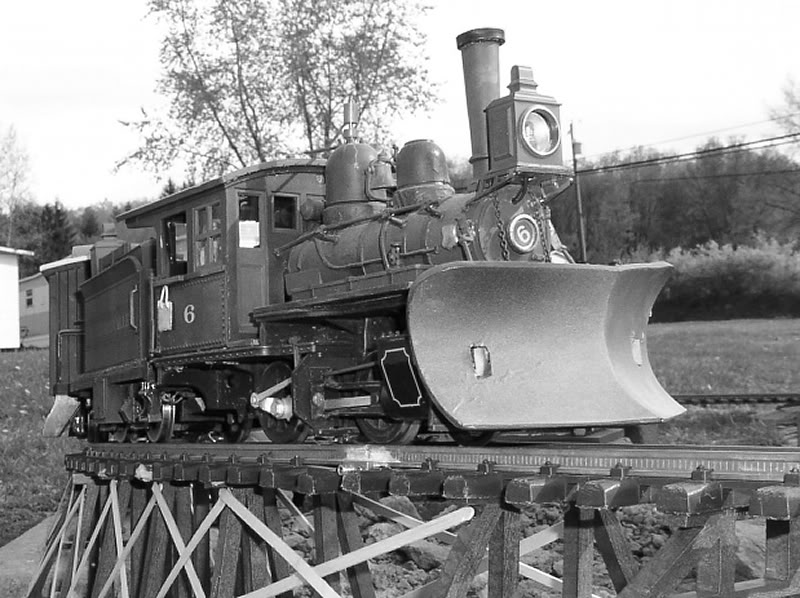
Softening, blurring, or fuzzing the
edges is a time honored portrait effect, and can help hide that pesky
stuff that you just can't get rid of. Some cameras can do this
automatically, Some do it manually by allowing you to set the depth of
field, or you can make an inexpensive spot filter from cardstock and a
bit of old nylon stockings. This one was a more of a happy accident,
the batteries were getting low so the camera didn't focus quite right.
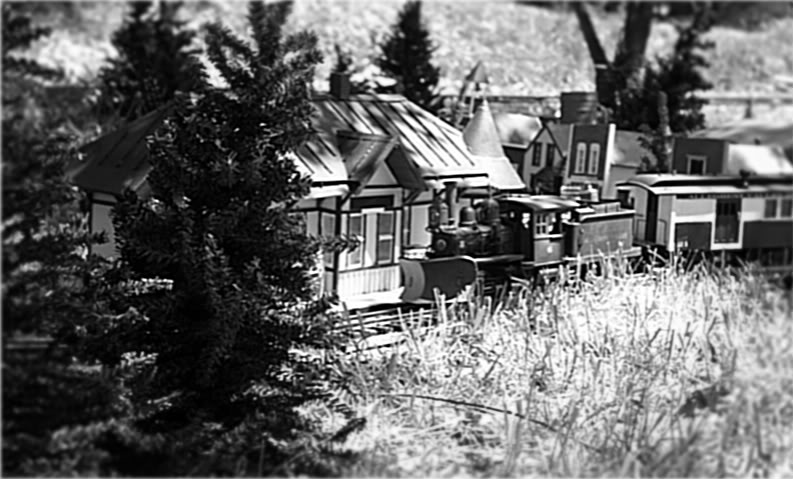
Don't Try Too Hard - Sometimes you try
everything and it just doesn't quite work, and sometimes you'll get a
keeper by plain old dumb luck. I didn't pose this shot, a loose rail
joiner cause it to stall right there. So, while trying to figure out
the problem, I squatted down and clicked off a picture -- and ended up
with a pretty nice photo.
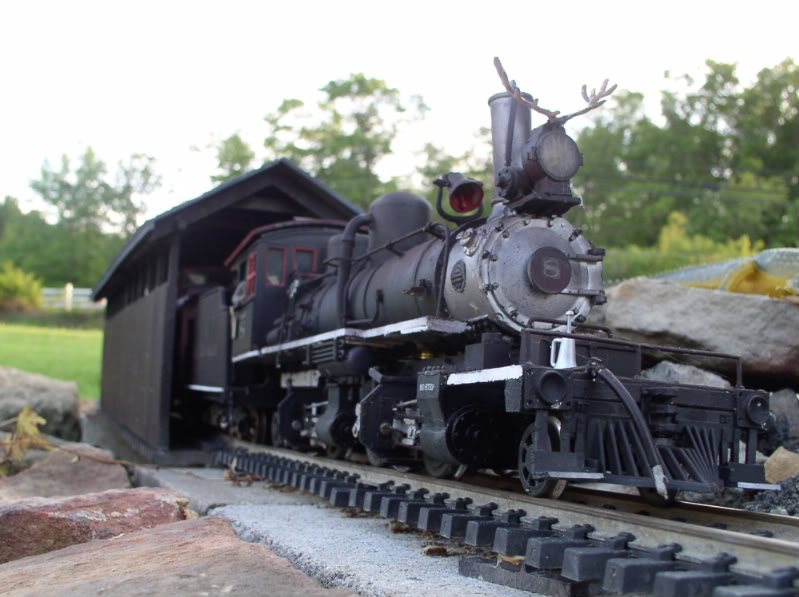
A Brief Word on Photo Editing - I rarely
do more than a final cropping - to get rid of stuff that detracts from
the focal point of the image - and resizing, unless I want a certain
'look'. Like toupees a good Photoshop still looks like a Photoshop, and
a bad one looks like.....
This one came out OK, I was trying for a 1914 look, and had to clone in a rock into the background. If you look close you can tell it's been manipulated.
This one came out OK, I was trying for a 1914 look, and had to clone in a rock into the background. If you look close you can tell it's been manipulated.
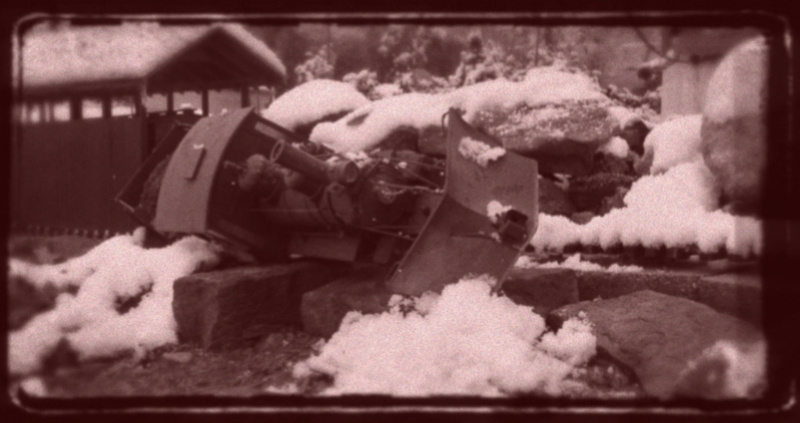
Faking Old Photos-
This is a more advanced trick done during editing. It's hard to
describe because each change requires just a small adjustment. A big
don't is don't just toggle the sepia filter. Sepia, is so overdone in
digital photography it's become a cliche.
Some Dos - DO add 'film grain' if your editor has the capability, this needs done pretty early in the editing process or it will really look faked.. DO shift the color balance slightly towards yellow if you want it to look like an old color shot. The reds were not very stable in prints from the 30's to the 70s. DO slightly fuzz or soften the edges. Old fixed focus cameras had a limited depth of field, and older films were fairly slow.
Some Dos - DO add 'film grain' if your editor has the capability, this needs done pretty early in the editing process or it will really look faked.. DO shift the color balance slightly towards yellow if you want it to look like an old color shot. The reds were not very stable in prints from the 30's to the 70s. DO slightly fuzz or soften the edges. Old fixed focus cameras had a limited depth of field, and older films were fairly slow.
